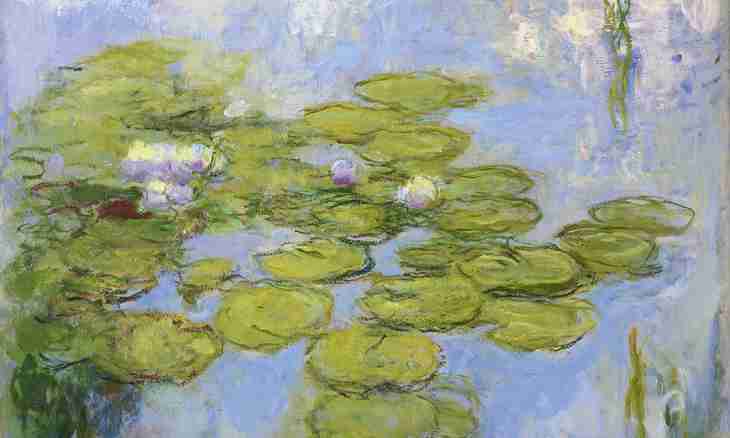The impressionism is the direction in art developing at the end the XIX beginning of the 20th centuries. The term came from the French word impression - "impression". Representatives of this direction tried as it is possible to reflect more naturally the changeable real world and the impressions of it.
For the first time this term was used in negative sense. The journalist Louis Lerua wrote a critical review of the first exhibition of adherents of it still of in any way not called direction. Having made a start from names pictures of Claude Monet "the Impression. Sunrise", the critic "called" impressionists of all participants of an exhibition. Those in protest accepted this name, and it became stronger as the term without negative value. Origin of impressionism is dated the 1860th. During this period the artists look for ways of avoiding academism. In 1863 E. Mané, the secret ideological leader of impressionists, presented to public the picture "Breakfast on a Grass", next year E. Buden invites him in Onfler. There the artist watched work of the teacher on etudes and learned to create pictures in the open air. In 1871 Monet and Pissarro in London get acquainted with creativity of U. Turner who is called the predecessor of impressionism.
Trying to leave from academism, representatives of the new direction carried out the search both in the field of plots of pictures, and in technology of their creation. Impressionists refused mythological, literary, biblical, historical scenes – they were characteristic of saloon painting and were in demand for aristocrats. Artists paid attention to usual everyday life. It is possible to call new cloths democratic, on them people in parks and cafe, in a garden were represented and during boat walks. The landscape, including city was widespread. Within these subjects the impressionists tried to catch originality of each represented moment, uniqueness of breath of life, to transfer the direct impression. To transfer every moment directly, vividly, freely and at the same time precisely, impressionists wrote mostly in the open air – in the open air. Striving for ease of the image, artists refused a contour – they replaced it with small contrast dabs. Imposing such fractional strokes, masters were guided by theories of color of Shevrel, Helmholtz, Ore. It allowed them to create the necessary shades by means of, apparently, flowers, not really close to reality, and to reflect in pictures practically each movement of air.
